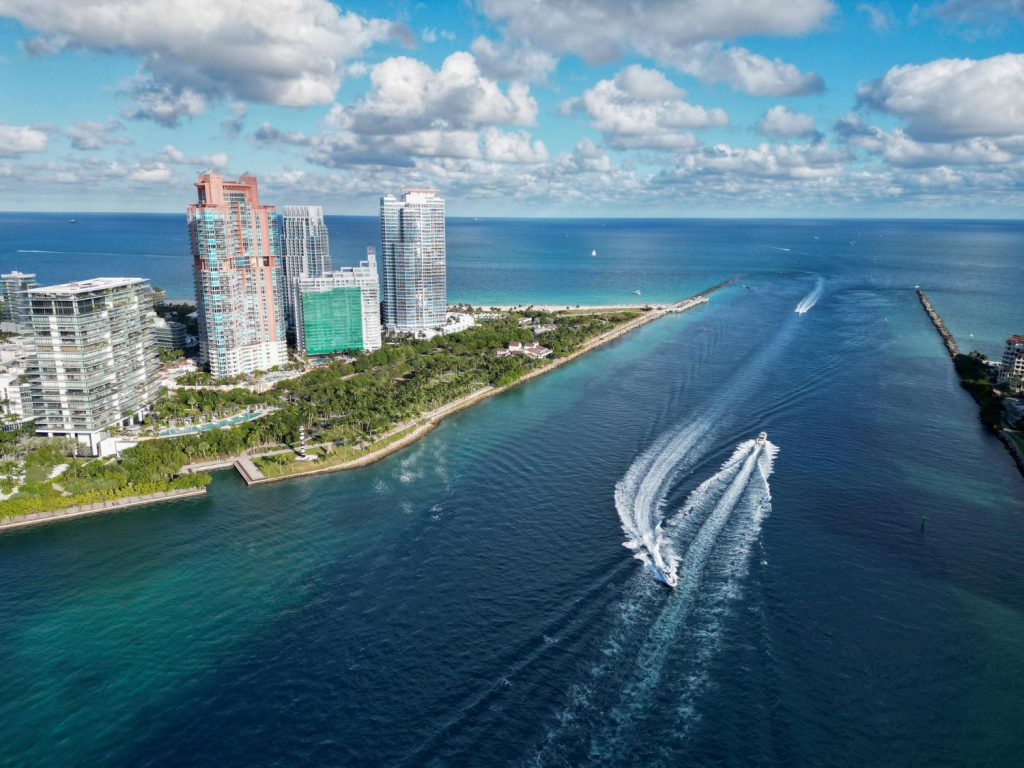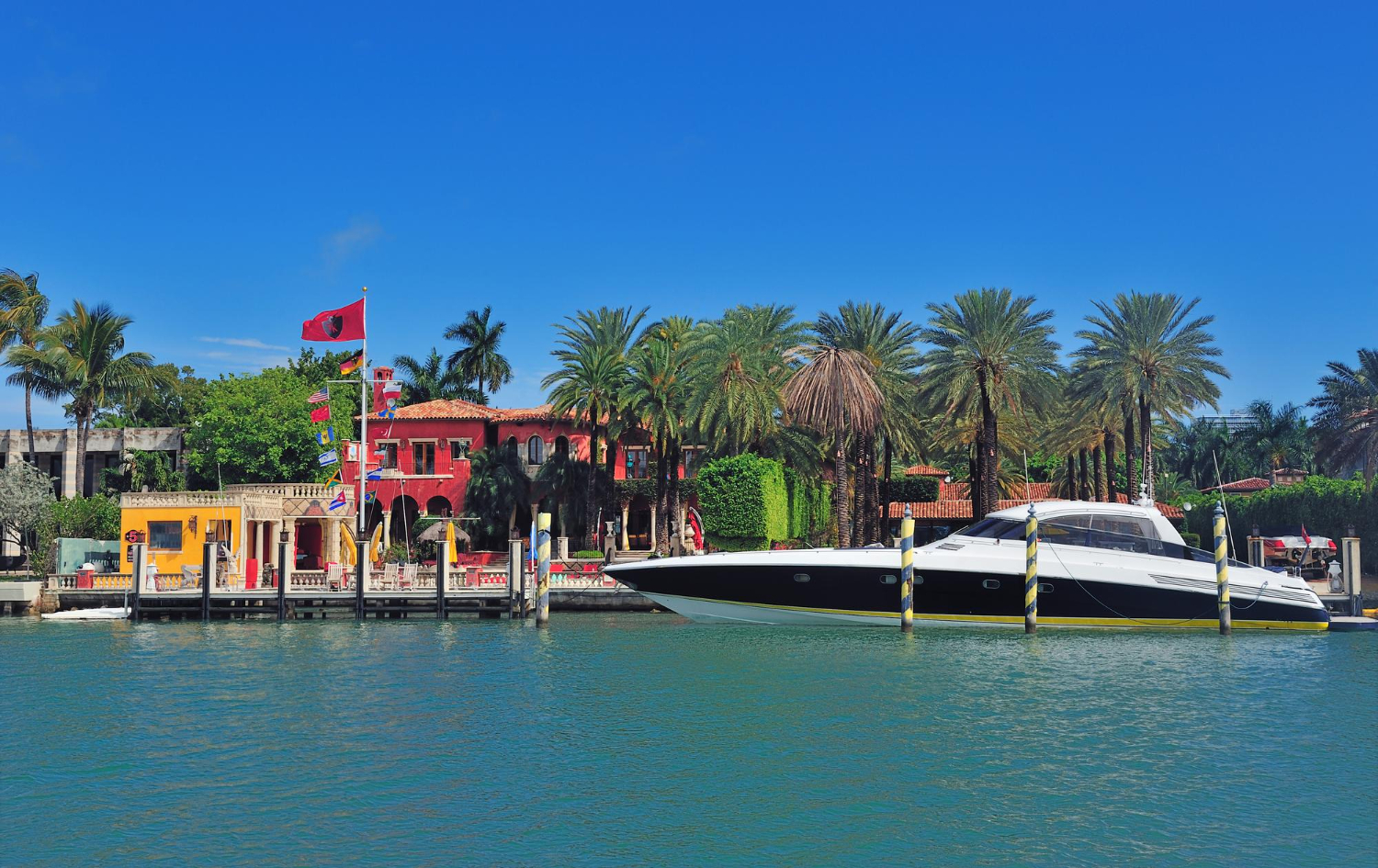Introduction: Navigating Biscayne Bay Begins Here
Navigating Biscayne Bay is one of the most rewarding experiences for boaters in Florida. Whether you’re new to the area or a seasoned sailor, this expansive waterway offers diverse ecosystems, picturesque scenery, and unforgettable adventures. Biscayne Bay is more than just water—it’s a living, breathing gateway to both the city of Miami and the natural treasures of Biscayne Bay National Park.
Spanning 35 miles, the bay provides access to protected environments, bustling marinas, and tranquil anchorages. Boaters will find themselves passing iconic landmarks like Dodge Island, exploring the waters around Miami Beach, and discovering hidden gems along the barrier islands.
Understanding Biscayne Bay Before Navigating
Why Navigating Biscayne Bay Matters
To fully appreciate the experience of navigating Biscayne Bay, one must understand its ecological and recreational importance. The bay is not only a natural sanctuary but also an essential part of the Miami region’s identity. From downtown marinas to the untouched beauty of Biscayne Bay National Park, the area offers every type of boating adventure imaginable.
The bay stretches from the northern reaches of North Miami all the way south to the remote islands of Biscayne Bay National Park, home to rich coral reefs and seagrass meadows.
Biscayne Bay National Park and Its Wonders
Located in the southern part of the bay, Biscayne Bay National Park is an ecological treasure. Boaters here can explore biscayne bay national park’s clear waters and coral formations. The park is accessible only by water, making a boat essential for anyone looking to explore its depths or camp on islands like Elliott Key.
Protected areas within the biscayne bay national system offer opportunities for snorkeling, fishing, and learning about marine biodiversity—if you’re planning your trip, be sure to include a stop here.
Planning Your Trip: Safely Navigating Biscayne Bay
When to Navigate Biscayne Bay
Navigating Biscayne Bay is best done between November and April, when weather is mild and visibility is highest. During these months, boaters can enjoy calmer winds and clearer skies while avoiding the hurricane season.
This time of year also means less rain, giving you more time to explore the waters off Miami Beach, venture past Dodge Island, or anchor near one of the peaceful barrier islands.

Trip Essentials for Boaters
Planning your trip properly ensures safety and satisfaction. Always bring:
- Navigation tools and waterproof charts
- Sufficient drinking water and food
- First-aid kit and safety gear
- Snorkeling equipment
- Protetor solar para recifes
Keep in mind that Biscayne Bay features shallow zones, so it’s important to check tide tables and underwater topography before launching.
Key Boating Routes for Navigating Biscayne Bay
Northern Biscayne Bay and Miami Beach Excursions
The northern region is a perfect starting point for navigating Biscayne Bay. Boaters can launch from marinas in North Miami and travel south under the Venetian Causeway and MacArthur Causeway, with views of Miami Beach and downtown Miami.
These waters are lively but manageable, especially for those who want a blend of urban and natural scenery. The bay near Miami Beach is great for anchoring, swimming, and people-watching.
The Scenic Journey Past Dodge Island
A highlight for many is cruising past Dodge Island, the massive maritime hub home to the Port of Miami. This area can be busy with shipping traffic, so navigating carefully is key. However, this route provides some of the most iconic views of Miami’s skyline and cruise terminals.
Dodge Island itself is not accessible to recreational boaters, but its proximity to downtown means you’re never far from fuel, provisions, or a great waterfront restaurant.
Exploring the Natural Side of Biscayne Bay
Biscayne Bay National Park by Boat
When navigating Biscayne Bay, make sure to spend time exploring Biscayne Bay National Park. This part of the bay is less developed and boasts natural wonders such as coral reefs and untouched barrier islands.
You’ll find great snorkeling spots and the famous Maritime Heritage Trail, which features several shipwrecks. Biscayne National Park, covering the southern end of the bay, offers solitude, history, and spectacular scenery that make the journey well worth it.
Hidden Gems and Lesser-Known Stops
If you’re looking to escape the crowds, head toward:
- Stiltsville: A cluster of historic stilt houses in the middle of the bay.
- Bear Cut: A waterway separating Virginia Key and Key Biscayne, teeming with wildlife.
- Elliott Key: The largest island in the park, ideal for overnight stays and hiking.
These areas offer a side of Biscayne Bay that many visitors never see—remote, pristine, and perfect for those seeking serenity.
Staying Safe While Navigating Biscayne Bay
Weather and Water Conditions
Although Biscayne Bay is generally calm, sudden weather changes—especially in summer—can catch boaters off guard. Afternoon storms are common, and strong winds can whip up waves quickly. Always check marine forecasts and have a plan for quick returns.
Shallow zones and sandbars are widespread, particularly near barrier islands and the edges of the bay. Navigation systems and local knowledge are vital tools for a smooth trip.
Environmental Guidelines for Boaters
Navigating Biscayne Bay also means respecting its ecosystems. Here’s how:
- Use mooring buoys instead of anchoring on reefs
- Eliminar corretamente os resíduos
- Reduce speed in manatee zones
- Avoid disturbing wildlife in nesting areas
As part of Biscayne Bay National Park, large areas of the bay are under environmental protection. Your actions help preserve the beauty of this region for future generations.
Activities to Enjoy While Navigating Biscayne Bay
Watersports and Recreation
Once anchored, the bay offers a range of activities including:
- Paddleboarding and kayaking near mangrove shorelines
- Swimming in shallow coves with crystal clear waters
- Exploring uninhabited islands for day trips
Popular gathering spots like Haulover Sandbar bring together boaters for floating parties and relaxed fun.
Diving and Snorkeling Hotspots
The southern bay, especially near Biscayne Bay National Park, is a diver’s dream. Coral reefs, fish-filled channels, and underwater structures make it an ideal location for underwater exploration.
Conclusion: Navigating Biscayne Bay—An Adventure Worth Taking
If you’re planning a boating adventure in South Florida, navigating Biscayne Bay should be at the top of your list. With its blend of urban access, natural beauty, and historical intrigue, the bay provides a full-spectrum experience for every kind of boater.
From the manmade marvels around Dodge Island to the protected zones of Biscayne National Park, this is more than just a trip—it’s a journey into one of America’s most iconic marine environments. Respect the water, prepare responsibly, and embrace everything Biscayne Bay has to offer.

 Navegar na Baía de Biscayne: Um Guia para Barqueiros">
Navegar na Baía de Biscayne: Um Guia para Barqueiros">
